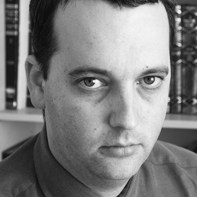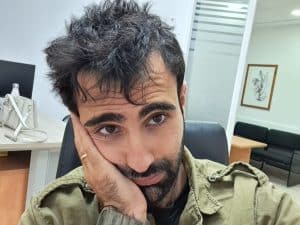By: Gilad Kariv
It isn’t necessary to be a revered expert in the history of the Jewish people to know how old the “Who is a Jew?” conundrum is. Simply reading the Scroll of Ruth and the Books of Ezra and Nehemiah is enough to indicate the depths of the dispute that has been part of Jewish life since the time of the First Temple and the Return to Zion. Nonetheless, it is a reasonable argument that the process undergone by the Jewish people in the modern age – particularly during the 20th century – has made the question of “Who is a Jew?” unquestionably into the most central issue facing the Jewish people in the 21st century.
In the seventh decade since the Holocaust and the establishment of the State of Israel, it has become clear that Jews’ marriage to nonJews is a basic phenomenon in Jewish life. It does not release the Jewish parent, Jewish teacher, the summer camp counselor, the rabbi and the community leader from deepening Jewish education for all ages. At a time when the anchors of Jewish identity in the 20th century – the memory of the Holocaust and the Zionist enterprise – no longer carry the same emotional payload for millennials (both in Israel and in the Diaspora), there is tremendous importance to instilling new life in the textual, spiritual and cultural origins of Jewish tradition. The pluralistic Jewish renewal taking place in the past two decades in Israel and many other places around the globe proves it is possible, and that the 21st century can be similar to other periods of Jewish history, in which cultural and spiritual breakthroughs occurred. Nonetheless, even in a period of cultural and spiritual revival, a large proportion of the younger generation of world Jewry will build their lives with non-Jewish partners.
In contrast to many opinions, this issue is relevant not only in the Diaspora. In Israel today there are 400,000 Jews who are not recognized as such by Jewish law and the definition of the Law of Return. Along with this huge public, there are approximately 2,000 Israeli citizens who marry mostly nonJewish foreigners every year. In the past twenty years, inter-religious marriage has become part of the Israeli reality too, albeit in much smaller numbers than abroad, but nonetheless not insignificant. In addition, thousands of Israeli families have children and grandchildren abroad that are quite likely to build their future lives with non-Jewish partners.
Another reason why “Who is a Jew?” is tied to the essence of the State of Israel, is the central role it plays in Jewish life the world over and its increasing impact on Jewish communities. The State of Israel and Diaspora Jewry have significant mutual impact. The fact that Israel has recognized Reform and Conservative conversions for the purposes of immigration for the past twenty years has given these conversions substantial legitimacy within the European and American Jewish communities. On the other hand, the conversion crisis and the increasing rigorousness of the Israeli rabbinate have created a grim reality in which it is virtually impossible to convert in orthodox Jewish communities the world over. The question of inter-religious marriage, conversion policy and the definition of “Who is Jew?” are expressed differently in Diaspora communities and in Israel, although we are largely all in the same boat. Any of the sailors can influence a boat’s direction and each one could also rock the boat.
Just like in the days of Ezra and Nehemiah, the sages Shammai and Hillel, or during the dispute over the treatment of Karaite or Marrano Jews, an epic battle is now under way in the “Jewish boat.” In many ways, this battle will determine the character of Judaism in the next century. On one hand, there are those who seek to strengthen clear definitions of those allowed to board the boat. On the other hand, there are those who understand that along with strengthening Jewish identity in Israel and the Diaspora through education, rich communal life and nurturing Jewish culture, it is necessary to fight for every family in which at least one parent is Jewish. At this stage, there is still the appearance of differentiating between those who recognize the Jewishness of someone with only Jewish father (for instance, the Reform movement in the US as opposed to the Reform movement in Israel) and those who would require conversion but promote a lenient and inviting policy. From a historical perspective, both are part of the same camp. Aware that in the modern age it is important to expand the borders of the Jewish people and allow as many as possible with Jewish origins to actively tie their fate to the Jewish community and the State of Israel.
The ideological and political battle in adopting broader, more inclusive definitions is important in and of itself. The leaders of the rabbinical establishment are wont to warn of the “Second Holocaust” of assimilation, but in the same breath push hundreds of thousands if not millions of Jews outside the “legitimate borders” of the Jewish people. However, this battle is the litmus test for the overall character of Judaism in the 21st century: introverted, clerical and in constant conflict with the outside world or a dynamic and inclusive personal and group identity in productive dialogue with the world around it. The border doesn’t run between the various streams of Judaism or between Israel and the Diaspora, but between the students of the sage Hillel in all of Judaism’s streams and entities, and the fanatical students of the sage Shammai.
Gilad Kariv is a Reform Rabbi and attorney in Israel, serving as the Executive Director of the Israel Movement for Reform and Progressive Judaism .









